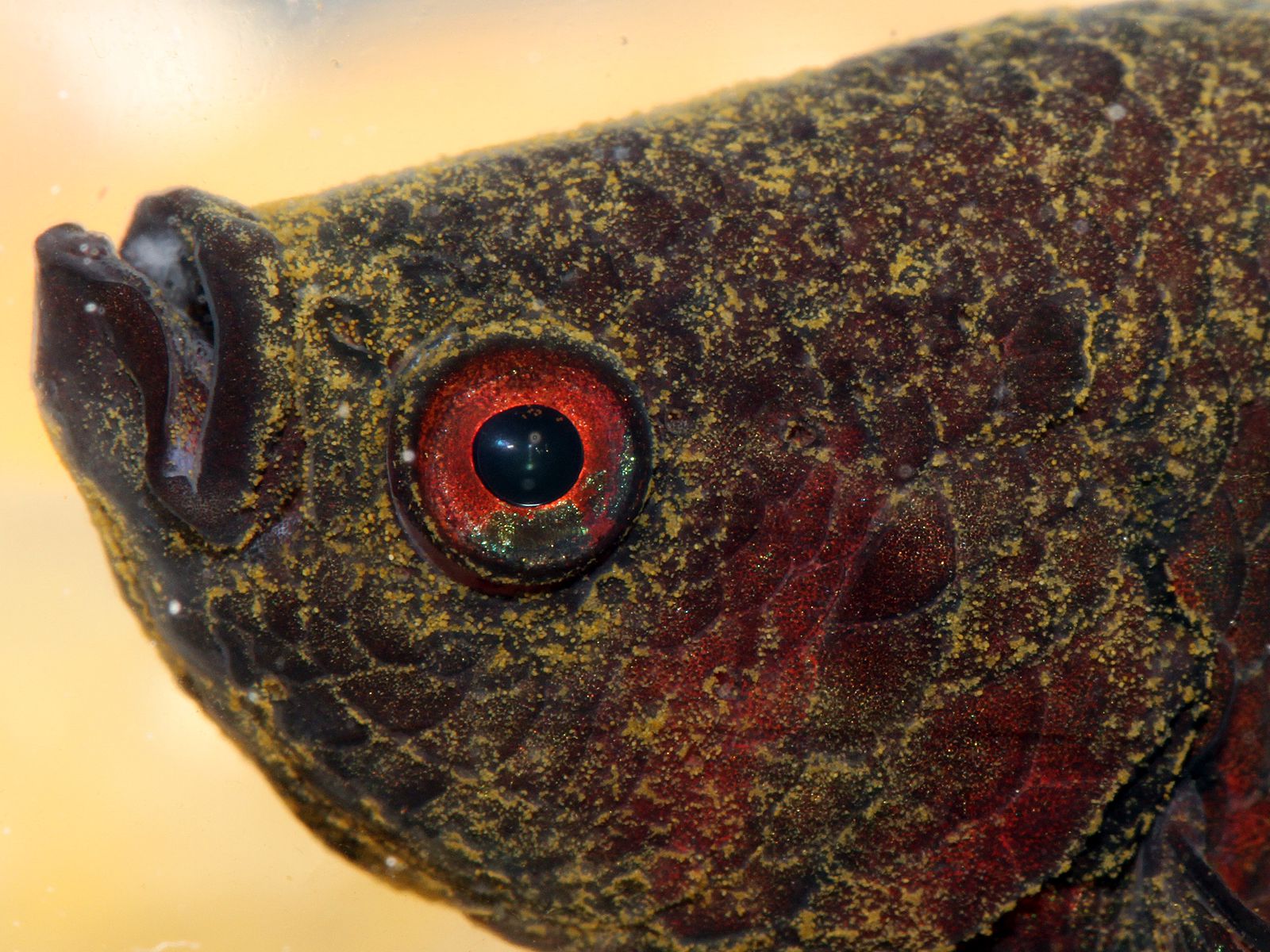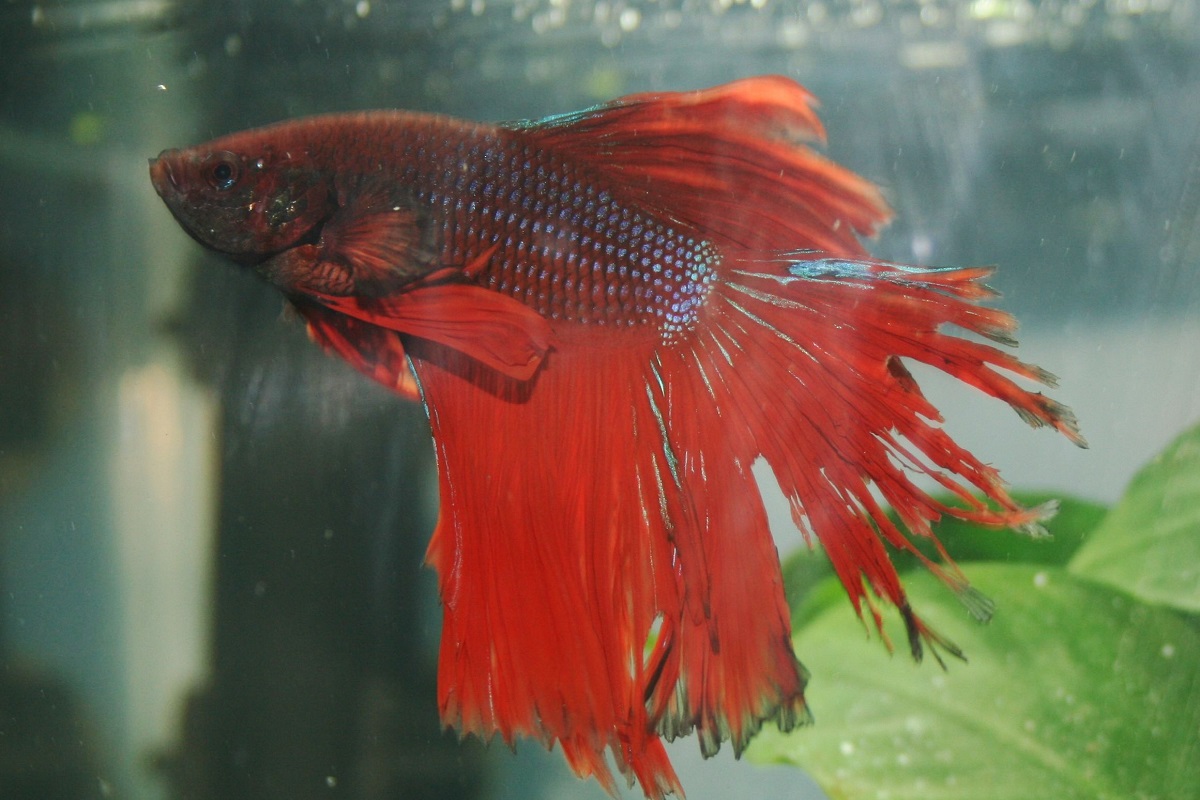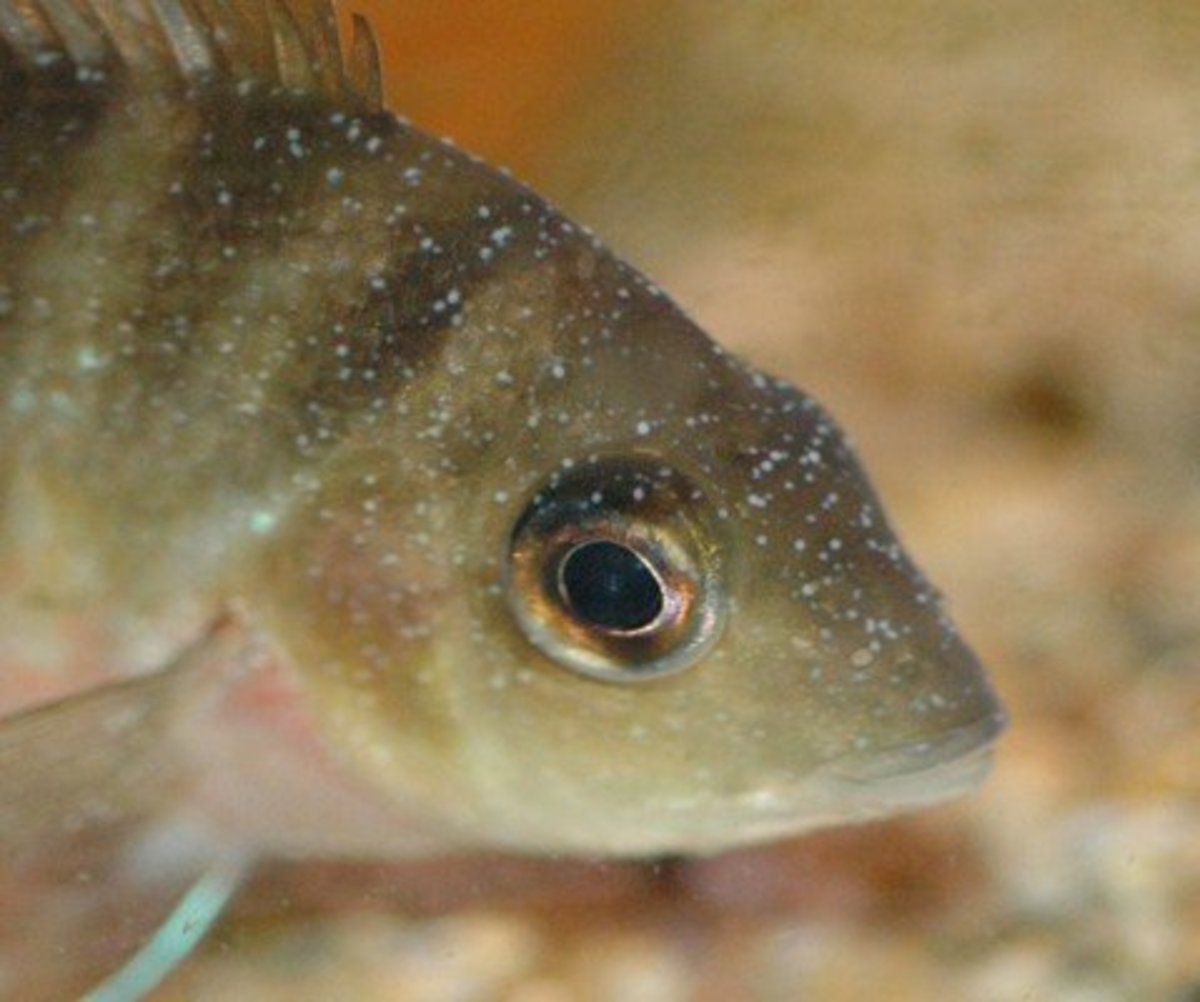Velvet disease is also known as Oodinium. It causes the formation of fine-grained dust in the fish’s body. Dust grains formed due to this disease are in gray or yellow tones. Due to its color, you may encounter rust disease or gold dust disease in some places. It is caused by a parasite called protozoan, such as the parasite that causes the white spot noise.
There are different types of this parasite called pillularis, cyprinodontum, limmeticum, and ocellatum. It can make many fish sick in both freshwater and saltwater. It is a disease that especially affects young fish in the developmental stage more and can cause their death.
Velvet Disease Symptoms
The symptoms vary according to the stage of velvet disease. There is a change in the behavior of the infected fish. The body of the fish twitches, its appetite decreases, it becomes sluggish and it starts to itch. In the advanced stages of the disease, the parasite spreads to the body of the fish and creates a dusty image. Although it is difficult to detect visually in the early stages, it is easier to detect by shining light on the fish in a dark environment.
The immune system of the fish exposed to this parasite creates more mucus in response to the disease. With the increasing mucus layer, the body of the fish becomes more opaque. This disease also negatively affects the gills. Fish caught velvet disease have difficulty breathing. In the advanced stages of the disease, immobilization of the eyes, skin irritation, wounds, and swollen eyes are observed.
Oodinium has a similar life cycle to the white spot parasite. In the first stage, it attaches to the body of the fish and then penetrates the skin and gills of the fish. It breaks down the fish’s cells and begins to feed in this way. When it reaches maturity, it leaves the fish, cuts into hundreds of pieces, and starts looking for new fish. If a new host cannot find a fish within 1-1.5 days, it dies.
Velvet Disease Causes
It is common in neglected aquariums with poor water quality. Taking good care of your aquarium and ensuring water quality will minimize the risk of this disease. The following factors predispose to velvet disease:
- Sudden changes in temperature
- Water pollution
- New fish or plants are not kept in quarantine
- Stress
- Transport
Some fish species are more prone to velvet disease. Gourami species, siamese fighting fish, danio species, goldfish and killifish are the most exposed fish to velvet disease.
Life Cycle of the Oodinium Parasite
The Oodinium parasite first settles in the gills. Because it is soft, it is easy to settle here. Then it starts to feed on fish. As it is fed, it develops and becomes more prolific. It is possible to summarize the life cycle as follows.
Infection stage – during this phase, the parasite immobile adheres to the body of the fish. It develops by feeding on fish.
Cyst stage – the parasite leaves the fish and settles somewhere. At this stage, it reproduces within the cyst by making cellular division.
The spore phase – as a result of the explosion of the cyst, spores are released. These spores survive for a while without being fed, that is, without settling back into a fish. This period varies between 24 and 36 hours.
When the temperature is 24 degrees Celsius, all these stages take place within 10 to 14 days.
Velvet Disease Treatment
Velvet disease is usually treated with copper salts. Note, however, that this process is not suitable for all fish. Copper salts are deadly for snails and shrimps. Therefore, it should be applied carefully. Methylene blue or quinine salt can also be used in treatment. Since some types of parasites can obtain their energy through photosynthesis, reducing light can be beneficial. You can try turning the aquarium into a dark environment to attenuate the interference.
In order for the parasite to leave the body of the fish, it must complete its development. Increasing the water temperature speeds up the development of the parasite. As the life cycle of the parasite accelerates, the treatment process is also accelerated. The sooner the parasite leaves the fish, the easier it will be to get rid of it. Of course, you should have started treatment during this period. Otherwise, you will worsen the situation. The treatment method we recommend is as follows.
- Increase the water temperature. Most tropical fish can survive at temperatures of 30 degrees Celsius. For goldfish, 21 degrees Celsius should not be exceeded.
- Turn off the lighting for a few days.
- If it won’t be a problem for your fish, use aquarium salt. Moli, guppies, plati and swordtails are not disturbed by some salt. Add one small spoon of aquarium salt for every 5 liters of water in the aquarium.
- Apply copper sulfate treatment for 10 days.
- If you have a carbon filter, remove it from the aquarium during the treatment process, as it removes the effect of the drugs.
Treatment of the disease should be started as soon as it is noticed. Because velvet disease is highly contagious and deadly.
How to Prevent Velvet Disease
To prevent velvet disease, it is necessary to know how the disease got into the aquarium. In fact, the parasite can be found naturally in your aquarium. However, this parasite will not cause disease in quality water conditions and aquariums with healthy fish. It expects the quality of the aquarium water to decrease for breeding. The weakening of your fish’s immunity is also a great opportunity for the parasite to turn into disease. Keep your fish’s immune system strong in order not to give this opportunity. Keeping your fish away from stress, feeding high-quality food and not disrupting aquarium care is the most effective method of protection.
Stress may be caused by a poorly maintained aquarium. Sudden temperature changes in water chemistry, bad water conditions, fish transportation are also causes of stress. Keeping the water clean is very important in aquarium maintenance. Therefore, regular partial water changes should be made.
The disease can come into your aquarium with plants, decors, or fish that carry the parasite. Before adding any new decor to your aquarium, be sure to clean it thoroughly. The healthy appearance of the newly purchased fish does not mean that it does not contain parasites. For this reason, each newly purchased creature should be kept in a quarantine aquarium for two weeks and under observation.




